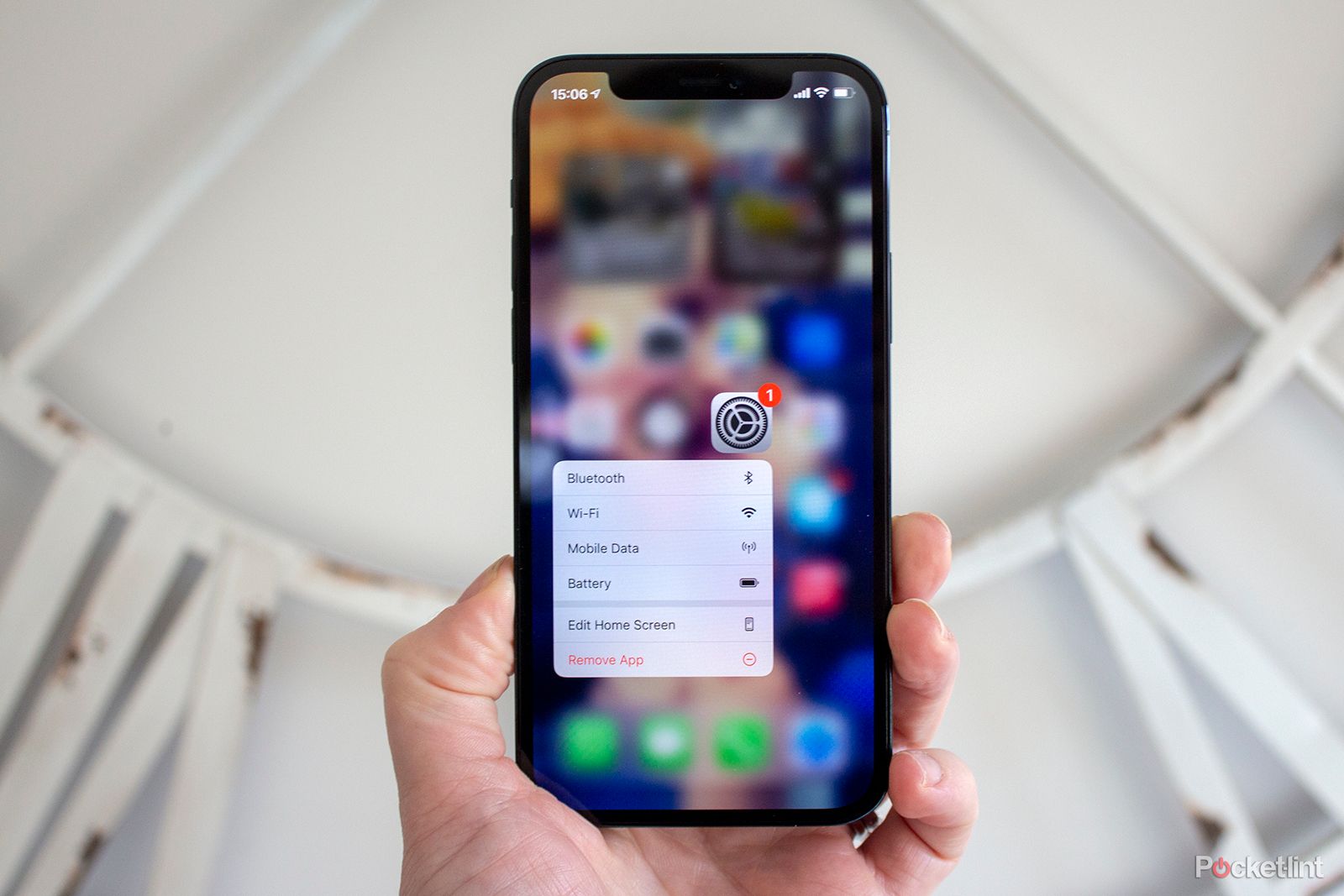What are haptics iPhone? Haptics on an iPhone refer to the tactile feedback provided through vibrations. This enhances user interaction and experience.
Haptics technology in iPhones offers subtle vibrations to improve the user interface. These vibrations simulate physical buttons, enhancing the touchscreen experience. Apple integrates haptics in various features like keyboard typing, notifications, and app interactions. The Taptic Engine, Apple’s custom-designed haptic feedback system, powers these vibrations.
Users enjoy a more immersive and intuitive interface with haptics. This technology makes tasks like typing or receiving alerts feel more responsive. Haptics also play a crucial role in accessibility, assisting users with visual impairments. Overall, haptics add a layer of realism and tactile feedback, making iPhone usage more engaging and efficient.
What are Haptics iPhone?

Introduction To Haptics On Iphone
Haptics on the iPhone add a new dimension to user interaction. By providing tactile feedback, haptics enhance the touch experience. Users feel vibrations that mimic real-world actions. These subtle touches make using the iPhone more intuitive. Apple has integrated this technology seamlessly into its devices.
The Role Of Haptics In Modern Touchscreen Devices
Haptics play a crucial role in modern touchscreen devices. They provide physical feedback in response to touch inputs. This helps users understand the actions they perform. It creates a more engaging and interactive experience.
- Enhances user experience by providing tactile feedback.
- Improves accessibility for visually impaired users.
- Makes interactions more intuitive and satisfying.
Evolution Of Haptic Technology In Smartphones
Haptic technology in smartphones has come a long way. Early phones had simple vibration motors. These provided basic feedback for calls and messages. Modern devices use advanced haptics for various functions.
Apple introduced the Taptic Engine with the iPhone 6s. This was a significant leap in haptic technology. The Taptic Engine provides precise and responsive feedback. It makes interactions feel more natural and immersive.
| Year | Haptic Technology Milestone |
|---|---|
| 2015 | Introduction of Taptic Engine in iPhone 6s |
| 2017 | Advanced haptic feedback in iPhone X |
| 2020 | Enhanced haptics in iPhone 12 series |

How Haptics Work On The Iphone
The iPhone uses haptics to create a tactile experience. This makes interactions more immersive. Understanding how haptics work can enhance your appreciation of the technology.
The Science Behind Tactile Feedback
Haptic feedback relies on vibration to simulate touch. When you press a button on your iPhone, a motor creates a small vibration. This vibration mimics the feeling of pressing a physical button.
The brain interprets these vibrations as touch sensations. This makes digital interactions feel more real.
Components Powering Haptic Feedback
Several components work together to create haptic feedback on the iPhone. These include the Taptic Engine, sensors, and software algorithms.
| Component | Function |
|---|---|
| Taptic Engine | Generates precise vibrations |
| Sensors | Detect touch and pressure |
| Software Algorithms | Control the vibration patterns |
The Taptic Engine is a small motor inside the iPhone. It creates the vibrations you feel. Sensors detect your touch and pressure. Software algorithms then control the vibration patterns. This ensures each interaction feels unique and natural.
Together, these components create a seamless haptic experience. This makes your iPhone feel more responsive and alive.
Types Of Haptic Feedback
Haptic feedback on iPhones is a game-changer. It enhances user interaction with subtle vibrations. Let’s dive into the different types of haptic feedback you can experience.
Static Vs. Dynamic Feedback
Static feedback provides a consistent vibration pattern. It remains the same every time you touch a specific element. For example, a single tap on the keyboard produces a quick, uniform vibration.
Dynamic feedback varies its intensity and pattern. It changes based on the action you’re performing. For instance, scrolling through a list may produce a varying vibration. This makes the interaction feel more natural and intuitive.
| Type | Description | Example |
|---|---|---|
| Static Feedback | Consistent vibration pattern | Keyboard tap |
| Dynamic Feedback | Variable vibration pattern | Scrolling through a list |
Customizable Haptic Experiences
iPhones offer customizable haptic experiences. Users can adjust haptic settings to their preference. This customization improves the overall user experience.
- Haptic Touch: This feature allows you to press and hold for different actions.
- Tapback: React to messages with various haptic responses.
- System Haptics: You can turn on or off system-wide haptic feedback.
Customizable haptics make your phone feel more personal. You can tailor the feedback to suit your needs. This ensures that you get the most comfortable experience.
Haptics In User Interface Design
Apple has integrated haptics in iPhones to enhance user experience. Haptics provide tactile feedback, making interactions more intuitive. This technology enriches the interface by providing physical sensations.
Enhancing User Interaction With Haptic Cues
Haptic cues can make digital interactions feel more real. When you tap a button, you feel a slight vibration. This confirms your action, making the experience more satisfying.
Haptic feedback can also make notifications more noticeable. You can feel a vibration when you get a message. This is useful in noisy environments where sound notifications might not be heard.
Here’s a table showing how haptics improve user interaction:
| Action | Haptic Feedback | Benefit |
|---|---|---|
| Button Press | Vibration | Confirms action |
| Notification | Short Pulse | Grabs attention |
| Scroll | Gentle Vibration | Enhances navigation |
Haptics For Accessibility
Haptics make devices more accessible for visually impaired users. They can feel vibrations instead of seeing visual cues.
- Blind users can receive tactile notifications.
- Haptic feedback helps in navigating menus.
Haptics also assist users with hearing impairments. They can feel vibrations for alerts instead of relying on sound.
Haptic technology bridges the gap for disabled users. It ensures everyone can enjoy digital interactions.
Haptic Feedback In Gaming And Apps
Haptic feedback is a technology that creates a touch response. It makes experiences more engaging. On the iPhone, haptic feedback enhances both gaming and app usage. Let’s explore how it works.
Immersive Gaming Experiences Through Haptics
Haptic feedback in gaming offers a new level of immersion. iPhone games use haptics to simulate actions. This makes games feel real. For example:
- A racing game might vibrate when you crash.
- Adventure games can simulate footsteps or heartbeat.
- Fighting games provide feedback with every punch.
This makes gaming more engaging and fun. Players feel they are inside the game world. The haptic feedback adds a tactile layer to the visual and audio experience.
App Integration: Beyond Gaming
Haptic feedback is not just for games. Many iPhone apps use haptics to improve user experience. Some examples include:
- Messaging apps provide a slight vibration for sent messages.
- Calendar apps use haptics for event reminders.
- Fitness apps give feedback for each completed activity.
These small touches make apps more intuitive. Users get instant feedback. This makes interactions feel smoother and more natural.
Developers can use haptics to enhance their apps. It adds a new dimension to user experience. Haptic feedback is a powerful tool on the iPhone.
Creating Haptic Patterns
The iPhone’s haptic technology allows users to feel subtle vibrations. These vibrations enhance the user experience by providing tactile feedback. Haptic patterns can be customized to create unique notifications and interactions.
Designing Effective Haptic Notifications
Effective haptic notifications require careful design. The patterns should be distinct and easily recognizable. This ensures users can differentiate between various alerts.
Here are some tips for designing haptic notifications:
- Short Bursts: Quick, short vibrations are more noticeable.
- Rhythmic Patterns: Use rhythmic sequences for repeated alerts.
- Intensity Variations: Vary the strength of vibrations to convey urgency.
Tools And Resources For Developers
Developers have access to various tools for creating haptic patterns. These tools simplify the process of adding haptic feedback to apps.
| Tool | Description |
|---|---|
| Core Haptics | A framework for creating complex haptic patterns. |
| Haptic Feedback API | Provides basic vibration control for simple feedback. |
Here’s a basic code snippet to create a haptic pattern using Core Haptics:
import CoreHaptics
let hapticEngine = try CHHapticEngine()
let pattern = try CHHapticPattern(events: events, parameters: [])
let player = try hapticEngine.makePlayer(with: pattern)
try hapticEngine.start()
try player.start(atTime: 0)
By understanding these tools and tips, developers can enhance the iPhone experience. Users will appreciate the thoughtful integration of haptic feedback.
Challenges And Limitations Of Haptic Technology
Haptic technology in iPhones offers a tactile experience. Yet, it faces several challenges and limitations. Understanding these issues helps in appreciating the technology’s complexity.
Battery Life And Hardware Constraints
Haptic feedback uses power from the battery. Frequent use can drain the battery quickly. This limits the time users can enjoy the feature. Developers must find a balance between power use and battery life.
Hardware constraints also play a role. The haptic engine takes up physical space inside the iPhone. This limits room for other components. Engineers face a tough task of fitting everything neatly.
Balancing Intensity And Comfort
The intensity of haptic feedback needs careful tuning. Too strong, and it becomes uncomfortable. Too weak, and it loses its effectiveness. Finding the perfect balance is crucial.
Different users have different sensitivity levels. What feels good for one person might not for another. Customizing haptic feedback for comfort is challenging. Ensuring a pleasant experience for all users is not easy.
The Future Of Haptics On Iphone
The iPhone’s haptic technology has evolved significantly. Haptics provide users with tactile feedback, enhancing their experience. The future of haptics on iPhone looks promising. It promises to bring more immersive and realistic interactions.
Advancements In Haptic Feedback
Apple has made substantial advancements in haptic feedback. The Taptic Engine was a breakthrough. It allowed for precise vibrations. This technology brought a new level of interaction. Users could feel subtle taps and vibrations.
With each iPhone release, haptic technology improves. The feedback becomes more responsive. It feels more natural. This enhances the overall user experience.
Predictions For Next-generation Iphones
Experts predict exciting features for future iPhones. Haptic feedback is expected to become even more sophisticated. It may include more varied textures. Users might feel different surfaces.
Another prediction is the integration of haptics with augmented reality. This could offer a more immersive experience. Imagine feeling virtual objects as if they were real.
| Feature | Expected Improvement |
|---|---|
| Texture Variety | More varied and realistic textures |
| AR Integration | Enhanced haptic feedback in AR experiences |
| Responsiveness | Faster and more precise feedback |
The future of haptics on iPhone is bright. With continuous advancements, users can expect more engaging interactions.

Conclusion
Embracing haptics on iPhones enhances user interactions, adding a tactile dimension to digital experiences. This subtle feedback improves usability and accessibility. As technology evolves, haptic feedback will continue to play a significant role. Stay updated with the latest advancements to fully leverage your iPhone’s capabilities.
Enjoy a more intuitive and engaging user experience.



